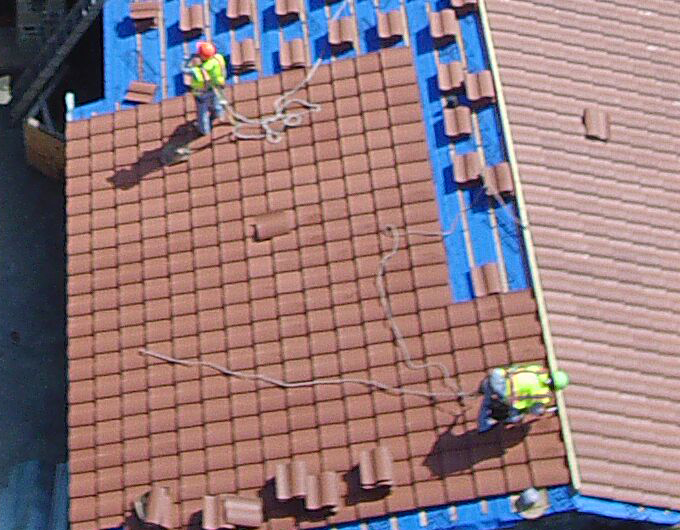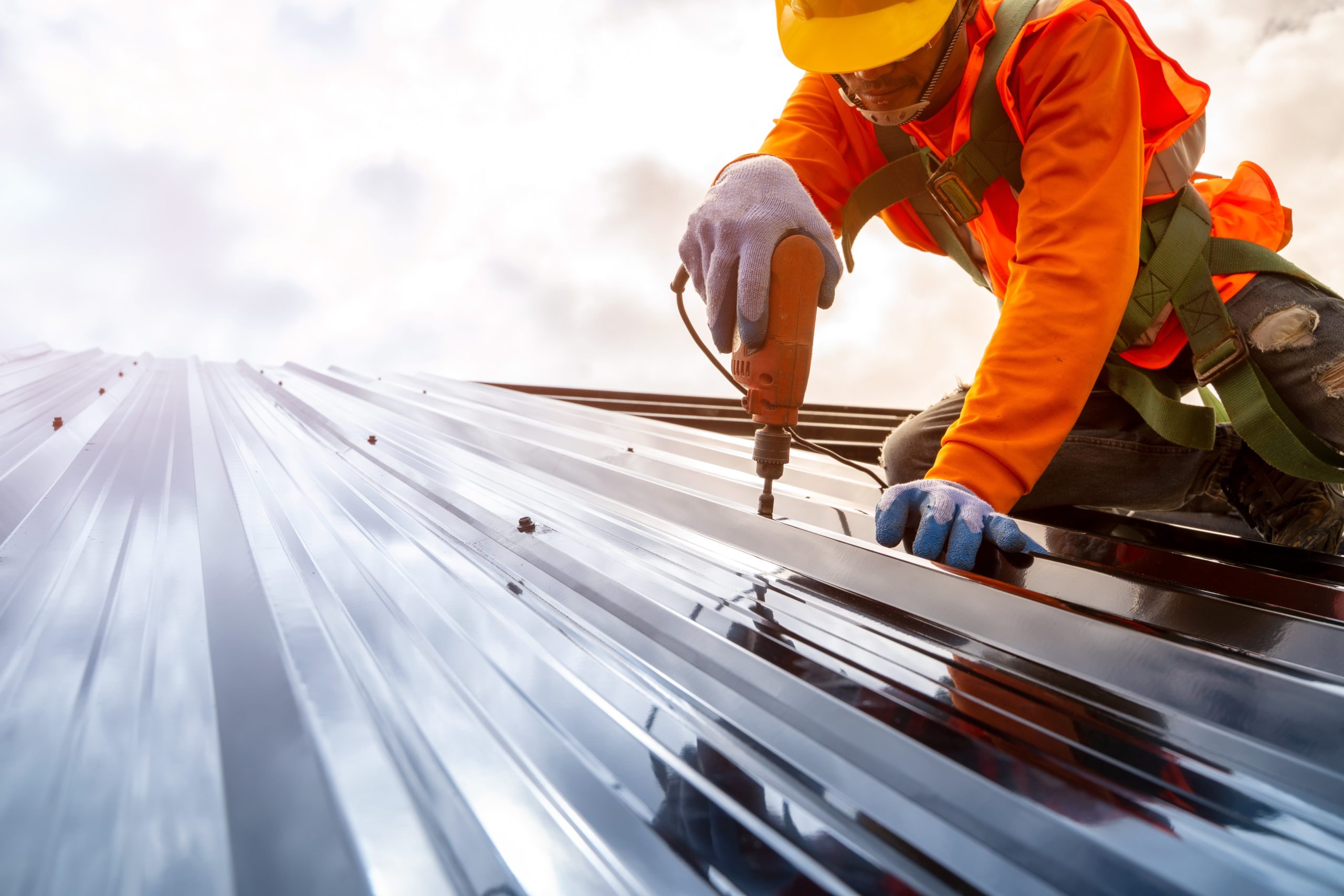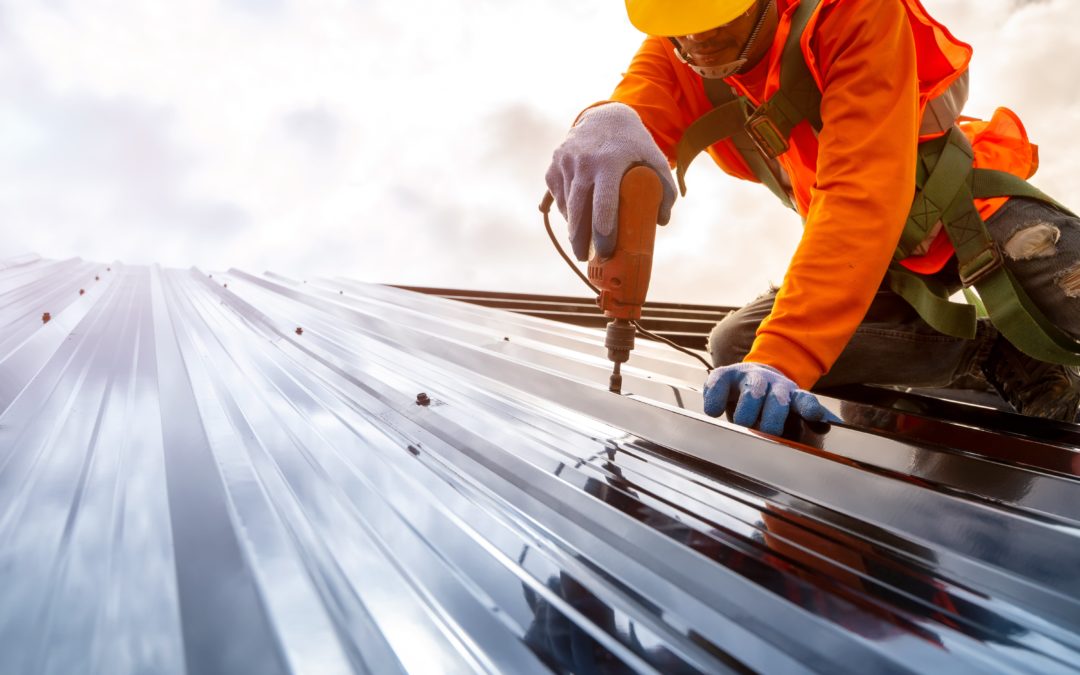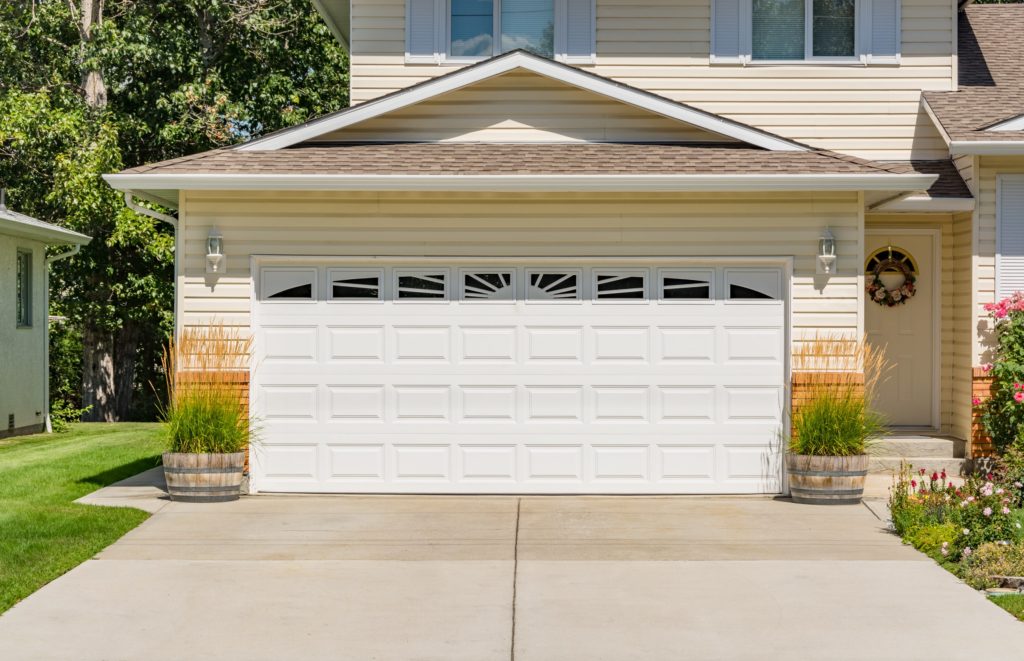Understanding Roof Leak Repair: Tips and Tricks
Do you find yourself running to the roof every time it rains to check if there are any leaks? Leaking roofs can be a major concern, as water seeping into your home can cause damage to walls, wood structures, and other materials. Fortunately, understanding how to identify and fix common sources of roof leaks doesn’t have to be complicated! In this blog post we will discuss the warning signs that indicate potential roofing problems, roof leak repair tips for fixing minor issues with ease and when it’s best to call in an expert. Are you ready? Let’s dive in!
What Is a Roof Leak and What Causes It
A roof leak is a common problem that homeowners face, and it can be quite troublesome. It is characterized by water penetrating through the roof and causing unsightly damp spots on the ceiling or walls. These damp spots not only compromise the aesthetics of your home but also pose a risk of structural damage if left unattended.
The causes of roof leaks can be varied and multifaceted. One of the primary culprits is age-related wear and tear. Over time, roofing materials can deteriorate, losing their effectiveness in keeping water out. This can result in the formation of cracks, gaps, or even holes that allow water to seep into your home.
In addition to age-related issues, weather-related damage can also lead to roof leaks. Severe weather conditions such as heavy rainfall, snowstorms, or hail can cause physical damage to the roof, compromising its integrity. Even a small breach in the roofing system can quickly escalate into a major leak during extreme weather events.
Apart from external factors, poor installation or improper maintenance can also contribute to roof leaks. If the roof was not installed correctly or if regular inspections and maintenance were neglected, the chances of developing leaks increase significantly.
To protect your property and minimize the risk of further damage, it is essential to be aware of these potential issues and address them promptly. Regular roof inspections, maintenance, and timely repairs are crucial in preventing roof leaks and preserving the integrity of your home.
Understanding Different Types of Roof Leaks
When it comes to roof leaks, understanding the different types can help you identify the issue quickly and seek the appropriate solution.
- Shingle Leaks: Damaged or missing shingles are common culprits for leaks. Exposure to harsh weather can cause them to crack or even fall off, leaving your roof vulnerable.
- Flashing Leaks: Flashing are thin pieces of metal installed at danger points for leaks like the chimney, skylights or roof valleys. If the flashing is corroded or not sealed properly, it can lead to leaks.
- Skylight Leaks: If your home has skylights, improper installation or decay can lead to leaks around the edges.
- Valley Leaks: A valley, where two sloping roofs meet, can be a prime spot for leaks if the shingles are not trimmed correctly.
- Gutter Leaks: Clogged gutters prevent water from flowing off the roof, causing it to back up under the shingles and potentially leak into the home.
Each type of leak requires a unique solution, ranging from replacing shingles to resealing flashings or clearing the gutters. Being able to identify these types of leaks is the first step towards effective roof leak repair.

Roof Replacement
How to Spot a Roof Leak Before It Becomes an Issue
Spotting a roof leak before it escalates into a severe issue can save you significant time, money, and stress. Here are some proactive steps you can take:
- Visual Inspection: Begin by conducting a visual inspection of the interior and exterior of your home. Inside, look for signs of water staining on the ceiling or walls, which could indicate a leak. Outside, examine your roof for signs of damage or wear, such as cracked, curling, or missing shingles.
- Attic Inspection: The attic is often the first place where a leak will show. Look for dampness, mold, stained insulation, or beams of light indicating a breach in the roof.
- Check Flashings: Regularly inspect the flashings around your chimney, vents, or skylights for corrosion or damage. Water often seeps in through these places if the flashing is compromised.
- Rain Gutter Check: Examine your rain gutters for excess granules, which could be a sign of shingle wear. Also, ensure that your gutters are free of debris so that water can flow off the roof properly.
- Professional Inspection: If you suspect a leak but can’t find the source, consider hiring a professional. They have the skills and expertise to identify and resolve roof issues effectively.
Remember, preventative maintenance is key to extending the life of your roof and avoiding leaks. Regular inspections, particularly after severe weather, can help keep your roof in good repair and your home safe and dry.
How to Identify the Source of a Roof Leak
Identifying the source of a roof leak can be challenging as water can enter the roof in one location and run down to another before it starts soaking into the ceiling. Here are some steps you can take to locate the source:
- Look for Roof Penetrations: The most common source of leaks is at roof penetrations such as vents, dormers, and chimneys. Items that penetrate the roof are the most obvious sources of leaks. Often, the leaks are due to aged, cracked, or missing flashing.
- Inspect the Attic: Use a flashlight to inspect the underside of the roof for water stains, black marks, or mold.
- Measure from a Reference Point: If you find evidence of a leak in your attic, measure the distance from the leak to two fixed points like the chimney, vent, or wall. Then, go to the roof and use the same measurements to help pinpoint the source of the leak.
- Check for Plumbing Vent Boots: Check for cracks in the plastic bases and broken seams on the metal ones. If the rubber boot surrounding the pipe is rotting away or torn, water can seep into the house along the pipe.
- Inspect Old Mounts: If you have remounted or installed an antenna or satellite dish, check the mounts. The holes could be a potential source of leaks.
- Hire a Professional: If you can’t find the source of the leak yourself, consider hiring a professional roofer. They have the experience and tools to identify and fix roof leaks effectively.
Remember, ignoring a leaking roof can lead to serious damage both inside and outside your home. So, if you spot a roof leak, act quickly to identify the source and get it repaired.
Common Solutions for Repairing or Preventing Roof Leaks
Repairing and preventing roof leaks is an essential aspect of home maintenance. Here are some common solutions:
- Replace Damaged Shingles: If shingles are cracked, loose, or missing, they should be replaced immediately to prevent water intrusion.
- Re-caulk Flashings: Over time, the caulking around flashings can degrade. Regularly inspect the condition of the caulking and re-apply as needed to maintain a waterproof seal.
- Install a Proper Underlayment: A waterproof underlayment beneath your shingles can provide an added layer of protection against leaks. This is particularly crucial in areas of high wind or heavy rain.
- Perform Regular Gutter Cleaning: Gutters should be cleaned regularly to prevent clogs, which can cause water to back up and seep under the shingles, leading to leaks.
- Install Leak Barriers: These specially designed materials provide an extra layer of protection in high-risk areas such as valleys and roof penetrations.
- Regular Roof Inspections: Regular roof inspections can help identify potential issues before they become major problems. These should be performed at least twice a year, and after any severe storm or weather event.
- Professional Roof Repair: If you identify a leak but are unsure how to address it, consider hiring a professional. They have the skills and expertise to repair the leak and prevent further damage effectively.
Remember, preventive maintenance is always better than a costly repair. Regular inspections and maintenance can help you prevent leaks and extend the life of your roof.
DIY Tips and Tricks for Fixing a Roof Leak
Fixing a roof leak can be a challenging but not impossible task for a determined DIY enthusiast. Here are some tips and tricks to help you out:
- Safety First: Always prioritize safety. Use a sturdy ladder, wear non-slip shoes, and avoid working on the roof in wet conditions. If you feel uncomfortable working at heights, don’t hesitate to call a professional.
- Gather the Right Tools: Essential tools for a roof repair include a pry bar, roofing nails, hammer, utility knife, and a trowel for applying roof cement.
- Identify the Leaky Area: As discussed earlier, this can be done by inspecting your attic or tracing the water damage on your ceilings and walls.
- Fix Shingles: If you see any cracked, curled, or missing asphalt shingles, replace them. Slide the new shingle into place and secure it with nails.
- Inspect and Seal Roofing Vents: Check your roofing vents for cracks or gaps. Apply a bead of roof cement around the vent’s edge to create a watertight seal.
- Repair Flashings: If flashings around your chimney or vent pipes are corroded or loose, apply a generous amount of roof cement and press them down.
- Replace the Roof Boot: If the leak is around a roof penetration, consider replacing the rubber boot that seals it. This replacement often involves removing some shingles and may be complex for some DIYers.
- Apply Roofing Tar: As a temporary measure, you can apply roofing tar to the leaky area. However, this is not a long-term solution and should be followed by proper repair.
Remember, while a DIY approach can save money, it’s sometimes best to hire a professional to ensure the job is done correctly and safely. Also, always check whether your repairs may invalidate any existing roof warranty before you begin.

Roof Repair Near Me
When to Bring in a Professional Roofer for Repairs or Maintenance
While minor repairs and regular maintenance might be manageable as DIY projects, there are times when it’s important to call in a professional roofer. If the damage to your roof is extensive – for example, if a large section of shingles is missing or damaged, or if there is significant water damage to more than one area – a professional’s expertise will be invaluable. Not only will they have the skills and knowledge to assess the extent of the damage accurately, but they will also have the necessary tools and equipment to execute the repairs effectively.
In addition to addressing visible damage, a professional roofer can also identify underlying issues that may not be immediately apparent. They can inspect the overall condition of your roof, including its structural integrity, to ensure that there are no hidden problems that could lead to further damage or compromise the safety of your home.
Furthermore, a professional roofer can provide guidance on the best course of action based on your specific situation. They stay up-to-date with the latest materials and techniques in the industry, allowing them to recommend the most appropriate solutions for your roof repair or replacement. Whether it’s choosing the right type of shingles, considering energy-efficient options, or exploring alternative roofing materials, their expertise can help you make informed decisions.
By entrusting your roof repair or maintenance to a professional, you can have peace of mind knowing that the job will be done correctly and to the highest standards. They have the experience to handle any challenges that may arise during the project and can ensure that the repairs are durable and long-lasting.
Remember, your roof is a vital component of your home’s protection and comfort. Investing in professional roofing services not only guarantees the safety and integrity of your property but also saves you time, effort, and potential headaches in the long run. So, when in doubt, don’t hesitate to bring in a professional roofer for repairs or maintenance.
In conclusion, a well-maintained roof is essential for protecting your home from the elements and ensuring its longevity. Taking proactive measures such as regular inspections, gutter cleaning, and installing leak barriers can help prevent leaks and extend the life of your roof. However, if you do encounter a leak or need major repairs, it’s best to enlist the help of a professional roofer. They have the expertise, tools, and knowledge to identify and address issues effectively, ensuring that your roof remains in top condition. So, don’t hesitate to call a professional when needed and make sure to follow their recommendations for ongoing maintenance and care of your roof. With proper attention, your roof can continue to protect your home for years to come.
https://www.google.com/maps?cid=465871782046421571





